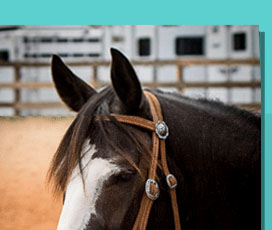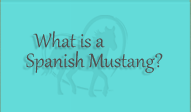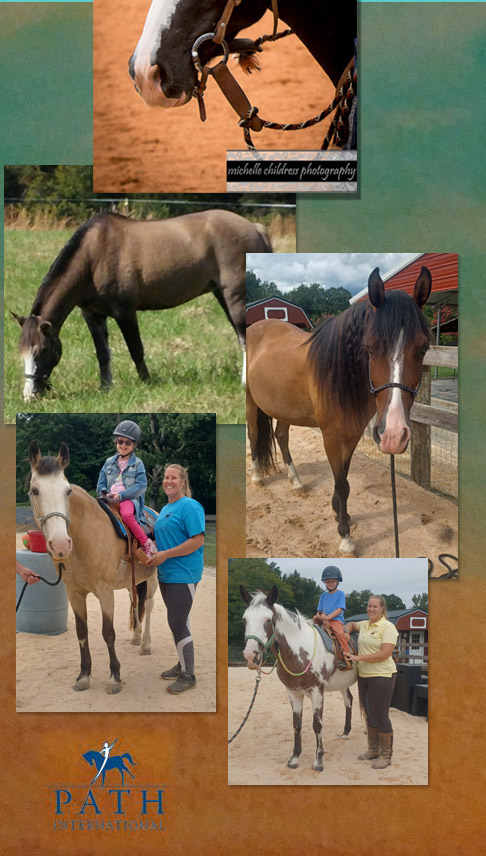So what is a Spanish Mustang?
Where did they come from?
When the Spanish explorers came to the "new world" in the early 1500s they brought some of the best horses with them. They knew they would rely on these horses to help them survive exploring and conquering this new land. At that time no horses existed in this "new world". Each ship heading to the new world from Spain carried breeding animals from choice Spanish stock, They came from the well known Spanish horses of the time with a background of Jennets and Barbs, bred to perfection for war, full of stamina with strong Andalusian bloodlines. No other breed in the world at that time was more suited for what they would become. The Spaniards set up breeding farms in the Caribbean and in Mexico and continued to breed the best to the best and their numbers grew. The Spanish and their magnificent horses were now ready to conquer Mexico. As they moved north, some horses escaped some were traded to natives, who had never seen these magnificent animals before.
At this point, they were not yet Mustangs, they were still the renowned Spanish horse of the Conquistadors.
It took another seventy years or so for the horses to reach New Mexico. By the late 1500's the distribution of the horse to the Native Americans began.
The first tribes to acquire horses were the Pueblo, Jicarilla, Apache and the Ute. Other tribes followed close behind. This was also a time when many horses escaped and became free of human bonds altogether. Both of these events contributed to what would become the Spanish Mustang.
We all know horses can change a persons life but those early Mustangs changed an entire culture. The Native Americans of that time lived with their horses, worked with their horses and they became each other. They lived as horse nations. They became excellent horsemen, continuing to breed the best to the best. They became legendary. The natives of the plains developed swift and fearless buffalo runners, the Nez Perce of the northwest developed the Appaloosa colored breed. Mustang bands were full of color, which the natives preferred- red and blue roans, paints appaloosas whites buckskins, duns and grullas.
As the mountain men began to roam the west, they acquired these Mustangs from the local populations. These men admired mustangs for their sure-footedness in the mountains and their ability to scramble through the rocks. They carried these pathfinders in search of new adventure and along new trails.
Mustangs from the Shoshone were crucial to the Lewis and Clark expedition. Fremont would not have succeeded without these tough little horses that could endure all the hardships that were being asked of them.
In the late 1840s and 1850s, the mountain men and their way of life began to die out. The mustangs survived. At that time there were approximately two million mustangs in the west, mostly in Texas and Oklahoma. Life was good for the mustang.
In the 1850s, easterners started coming west, guided by old mountain men who had managed to stay alive long enough to help participate in the settling of the wilderness. With the white settlers came the eastern horses, not suited for the west at that time, but they kept coming.
When young ex soldiers returned to Texas after the Civil War, they found that wild cattle had spread all over, and the ex soldier knew they were worth money. The Cowboy came to be one of the major icons of the west. His transportation of course, was the Spanish Mustang.
Even though more Eastern horses were arriving, the mustang was still the only one tough enough for the job. The Indian pony turned into the cow pony. The cowboy and the mustang became intertwined. They became one similar to the ways in which the Indians embraced the mustang. Cowboys and mustangs became the stuff of legend, inspiring songs books and movies.
As time went on, Easterners and their horses kept coming west. A variety of horses got loose or escaped in raids. Some of these horses managed to survive in the mustang herds. As the west continued to develop ranchers and farmers felt the wild mustangs were in the way, eating the grass they wanted for their livestock. The wild mustang was in the way. After hundreds of years of glory, many now considered them nothing more than vermin.
Powerful people convinced our government to take action and get rid of the mustang. In the early 1900s thousands upon thousands of mustangs were killed.
At about this same time, a young cowboy and surveyor came on the scene. Robert Brislawn lived in northwest Wyoming. He believed in the mustang. He had used them in his work and they took care of him. Mr. Brislawn saw the need to save the icon that had played such a pivotal role in American history.
He and is family traveled the west, most of it on horseback. He saw first hand the small bands of pure Spanish type horses that had not yet been diluted by the eastern horses. He collected horses from isolated Nevada ranches and from the northern Cheyenne and Ute tribes. His horses possessed all the qualities of true Spanish horses like the conquistadors rode.
The Cayuse Ranch in Wyoming was the homestead of Bob Brislawn. It is still called home to the Brislawn family as the continue working to preserve the Spanish Mustang. The Brislawn family is the principal force in saving our country's first horse.
Read more
|














